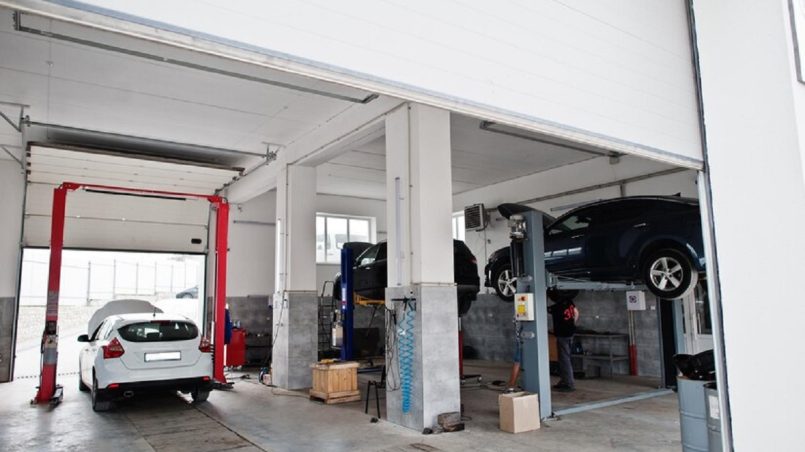Having a three-car garage is the dream for many homeowners. Not only does it provide ample parking space, but it also offers versatility for storage, hobbies, and projects. However, many factors must be considered when designing and building a three-car garage to maximize function, spacing, and overall usage. This article will explore the key dimensions, layout options, and design considerations for constructing the ultimate 3 car garage dimensions.
Determining the Overall Size
The first step is determining the total desired square footage. The typical size for a 3 car garage dimensions is between 600 and 1000 square feet. Here are some standard dimensions to consider:
Width
- The standard width for a single garage bay is 12 feet.
- Therefore, a typical three-car garage’s width is 36 feet (12 ft x 3 bays).
- For larger vehicles like trucks or SUVs, wider bays of 14-16 feet may be preferable.
Depth
- The minimum depth for a garage bay is 20 feet, but 22-24 feet is more comfortable.
- Allow 2-4 feet extra space behind the vehicles and around doors/openings.
- A 36′ x 24′ garage (864 sq ft) provides ample room for three average-sized cars.
Height
- The standard ceiling height is 8 feet for enclosed garages.
- A higher ceiling of 9-10 feet may be needed for tall vehicles.
- Unfinished/framed garages may have ceilings up to 12 feet high.
Material Considerations
- The construction materials used can affect the interior dimensions.
- Allow for the thickness of wall framing, gypsum board, insulation, etc.
- Pre-fabricated metal garages have thinner wall systems than wood-framed garages.
Layout Options
Once you’ve determined the target size, the next consideration is how to lay out the three bays. Here are some typical configurations:
| Feature | Dimensions | Notes |
| Garage Width | 36 feet | Standard 12ft width x 3 bays |
| Garage Depth | 24 feet | Allows ample room behind vehicles |
| Garage Height | 8-10 feet | Standard ceiling height |
| Bay 1 Width | 12 feet | Fits most average cars |
| Bay 2 Width | 12 feet | Fits most average cars |
| Bay 3 Width | 12 feet | Fits most average cars |
| Bay Separation | 2-3 feet | Space between vehicles |
| Garage Door Height | 8 feet | Standard height |
| Garage Door Width | 16 feet | Allows most vehicles |
| Driveway Approach | 20-30 feet | For easy access |
| Walkway Width | 3-4 feet | Access to rear bays |
| Workbench Depth | 6-8 feet | Comfortable workspace |
| Storage Shelving | 8-12 feet | Organized storage |
| Power Outlets | Every 6 feet | Convenient charging |
| Lighting | LED shop lights in each bay and storage area | Well lit interior |
Read Also: WHAT TO DO WITH YOUR GARAGE SPACE
Side-by-Side Bays
This layout places all three bays next to each other, maximizing width.
- Simple and efficient use of space.
- Allows for extra deep middle bay if needed.
- The shared wall between bays helps divide space cleanly.
Tandem Bays
With tandem bays, one bay is placed behind the other two.
- Allows for a deeper garage footprint.
- Middle Bay can be used as a shared access area.
- The rear bay may feel cramped or hard to access.
L-Shaped
An L-shaped layout offers both width and depth.
- Provides both broad and deep bays.
- Angled bay adds architectural interest.
- It could require a more complicated roof design.
Front + Back
This design separates one bay at the front and two bays at the back.
- Allows extended, unbroken area at the rear for storage.
- The front bay can hold daily vehicles while the rear acts as a workshop.
- Back bays may be less convenient to access overall.
Design Considerations
Carefully think through how the garage space will be utilized. Here are some key factors to guide layout and design:
Vehicle Types
Consider the types of vehicles that will be parked inside. The bay width and depth should comfortably accommodate the most significant cars, trucks, or SUVs without cramping.
Parking Orientation
Most garages have side-by-side parking, but front-to-back is another option if space allows. This is only recommended for narrow vehicles.
Shared Access
For tandem or front-back designs, plan walkways for accessing rear bays. A minimum 3-4 foot width is ideal, allowing easy movement past parked vehicles.
Divided Space
Consider how interior walls and partitions can divide the garage into organized storage, hobby space, etc. This will help maximize usefulness.
Doors/Openings
Most three-car garages have one sizeable front entrance, but multiple doors can allow access flexibility. Swing-out or roll-up doors both work.
Workbenches, Shelving + Loft Storage
Design and locate storage elements like shelving, cabinets, workbenches, and lofts to utilize all available space while allowing room for car doors to open.
Electrical/Lighting
Adequate lighting and ample grounded electrical outlets are must-haves. Provide lighting over each bay, in storage areas, and exterior lights on garage doors.
Important Measurements + Clearances
When laying out a three car garage, pay special attention to these critical measurements:
Bay Width
As mentioned, 12-16 feet per bay allows most vehicles to fit comfortably without scraping sides. For frequent larger vehicles, go 16 feet+.
Vehicle Length
Account for a minimum depth of 20-24 feet for parking, more if full-sized trucks or SUVs will be parked inside. Measure your most extended vehicles if in doubt.
Door Opening Height + Width
The standard entry height is 8 feet to accommodate cars and light trucks. Wider doors (12-16 feet) allow more oversized vehicles. Measure your cars and add a few inches of clearance.
Bay Separation
For side-by-side bays, allow a minimum of 2 feet between vehicles. Three feet provides more wiggle room for opening doors without hitting adjacent cars.
Driveway Approach
Allow 20-30 feet minimum before garage entrance doors for driveway approach. More space creates easier turning/access.
Interior Circulation
Design interior layout to allow 4-6 feet of clearance around parked vehicles for accessing doors and walking around. More allows more effortless movement.
Storage + Work Areas
Designate at least 6-8 feet depth for shelving, workbenches, washer/dryers, etc. Deeper space (10+ feet) allows more versatility.
By carefully considering all these measurements and clearances, you can create the ideal three car garage design to suit your needs. Don’t be afraid to think creatively to maximize function.
Incorporating Extra Features
Beyond parking, a well-designed three car garage offers flexibility. Consider incorporating features like:
Storage Solutions
- Tall shelving units
- Overhead racks/lofts
- Cabinets for organizing tools
- Drawers for fasteners, automotive fluids, etc.
- Closet for coats, boots, etc.
Working Space
- Wide workbench(s) for DIY projects
- Utility sink for cleaning/washing
- Vice(s) for securing projects
- Extra outlets and task lighting
Comfort Features
- Heater/AC unit for climate control
- Ceiling fans for airflow
- Radio/stereo system
- Wifi/TV for entertainment
Safety Gear
- Smoke/carbon monoxide detectors
- Fire extinguisher(s)
- First aid kit
- Eye wash station
Convenience Upgrades
- Built-in air compressor
- Vehicle charging stations
- Natural gas line for appliances
- Garage door remote controls
Don’t be afraid to dream big and customize your garage. Items like lift systems, paint booths, or in-floor heating can transform your garage into an automotive haven.
Key Planning Tips
To summarize, follow these best practices when planning and constructing a three car garage:
- Measure vehicles to determine the ideal bay width/depth and door opening size
- Allow ample space for circulation around parked vehicles
- Use partitions/walls to designate organized storage and workspace
- Place doors and openings wisely for easy access to all areas
- Install great lighting, power outlets, and garage door openers
- Match bay sizes to the types of vehicles that will use them
- Plan sufficient clearance for maneuvering and opening doors
- Incorporate specialized features to maximize utility
Frequently Asked Questions
How much does a three car garage cost to build?
A typical price range is $15,000-$45,000 depending on size, features and finishes. Prefab metal garages are the most economical.
What are the minimum interior dimensions needed?
Plan for at least 36′ width and 22′ depth. Increase depth to 24-30′ for extra space behind vehicles.
Should I insulate and finish the interior walls?
It depends on your budget and how you plan to use the space. Insulation keeps the garage comfortable year-round.
How many windows should I add?
At a minimum, one window per bay for ventilation. More natural light is better if it is within budget. Skylights are also great.
How many garage doors should a three car garage have?
Most have one large entrance door. Separate doors allow more flexibility but cost more.
What size and type of garage door should I choose?
9×8 feet per door provides ample height/width clearance. Roll-up or swing-out styles both work well.
Conclusion
A well-designed three car garage provides ample secure parking with room left over for hobbies, projects, and extra storage. Keeping key dimensions and spatial planning principles in mind will ensure your garage accommodates all your needs. Don’t be afraid to get creative with layouts and incorporate specialty features like organized storage solutions, utility upgrades, and comfort accommodations. With intelligent planning and quality construction, your 3 car garage dimensions can enhance the lives of your vehicles and your own. The investment will pay dividends for years down the road.



